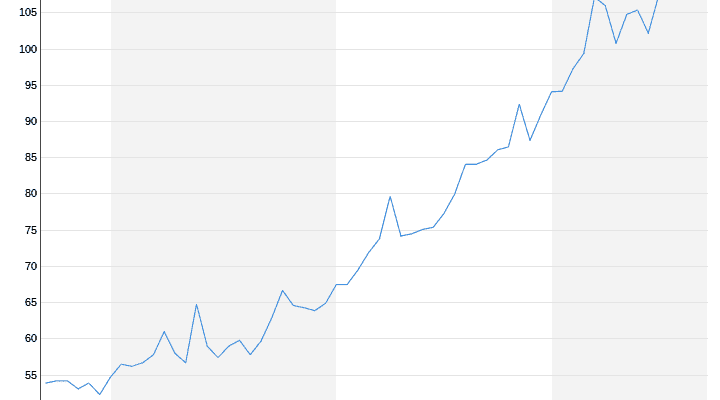Saturday, January 23, 2021
Freight prices six times as much
Container giants are driving away from the corona lull
By Diana Dittmer
Freight shipping is booming. The order books are full, the ships are at full capacity, and container prices are high. Moller Maersk and Hapag Lloyd are profiting with substantial price gains. But the downside is traffic jams, delivery bottlenecks and chaos in the ports. Next, the consumer pays on it.
For a troubled industry, the roller coaster ride in the Corona year 2020 seems to want to end lightly. While the global economy is still in the shock of the second wave of pandemics, the business of freight shipping companies is showing a rapid and completely unexpected recovery. Whether new furniture, drills for DIY or exercise bikes to stay fit at home: The hunger of consumers for new goods is growing, and with it the hunger for containers in which consumer goods, which are largely produced in Asia, are transported to the west.
"The first quarter was good, the second incredibly weak. Since the third quarter, you can see that demand is rising again. People are buying more because they can't go on vacation or eat in restaurants," says Hapag-Lloyd boss Rolf Habben Jansen ntv. He hadn't expected that.
The main reason for a boost in the container business is the fact that the high demand meets a limited supply of cargo space. It is "a bottleneck problem", quoted the Financial Times (FT) Lars Jensen from the analysis house Sea Intelligence. "Prices are set by customers fighting for a limited resource – containers". The consequence is significantly higher freight prices. According to industry information, transporting a standard container on the route from Asia to Northern Europe is currently more than four times more expensive than it was eight weeks ago. Instead of $ 2,000, $ 9,000 is due.
The fight for the resource container
The British freight forwarder Edge Worldwide has even encountered prices of up to US $ 12,000 per container. There are cases in which the increase in shipping costs is already greater than the profit from the sale of the goods, the FT quotes the British association of household appliance manufacturers. At some point, the buyers would have to pass these costs on to the end consumer, they say.
The first lockdown at the beginning of 2020 is to blame for the bottleneck in containers: At that time, the large shipping companies reduced their capacities and returned rented cargo ships. Thousands of containers stranded in Europe and the USA. They weren't shipped back to Asia because there was simply no need for them there. Most goods are only transported in one direction, from east to west, anyway. The result: what the West today – in the boom in demand – has too many containers, Asia has too little.
This is clearly well received by stock market traders: The shares of the shipping companies A.P. Moller Maersk and Hapag Lloyd have climbed almost 50 percent and over 100 percent respectively since November. However, the price explosion also has a downside.
Traffic jams, delivery bottlenecks, inflation
A survey by IHS Markit found that delivery times in the euro zone in December were longer than they had been since the peak of the pandemic in April. "Supply bottlenecks and higher freight rates could dampen trade growth somewhat" and also contribute to "temporarily higher inflationary pressure in the course of the year," the FT quotes an ING economist.
Hapag-Lloyd boss Habben Jansen not only warns of delivery bottlenecks. The stock market euphoria about the increased freight rates was exaggerated at this point for another reason. His company has not yet benefited excessively from this trend, as he said in an interview with ntv: "Everyone is always talking about the spot rates. The contracts we signed last year are 'normally' fulfilled," he says. "If we take the average price of 2020, we are five percent higher than that of 2019. That is not a huge amount."
After years of ruinous price wars that resulted in bankruptcies and mergers, the turnaround in the middle of the corona crisis is still remarkable for the industry. The shipping companies coped less well with the 2008/09 financial crisis. At that time the situation was reversed: there were too many freighters and prices were low. Hapag Lloyd needed financial injections from the owners in order to be able to stay afloat. Even after that, the Dutchman Habben Jansen, who has been on board since 2014, had to keep turning the cost screw – even at the beginning of the pandemic.
Despite all caution, Habben Jansen assumes that the boom will continue in 2021. Customers should try to avoid bottlenecks like the one they are now, he says. In addition, his shipping company is well positioned in contrast to the competition: the head of Germany's largest shipping company has just renewed his fleet for just under a billion euros. With foresight, he also ordered new, even larger containers in good time.
. (tagsToTranslate) economy (t) Hapag-Lloyd (t) container ship (t) shipping (t) corona crisis (t) inflation (t) trade
